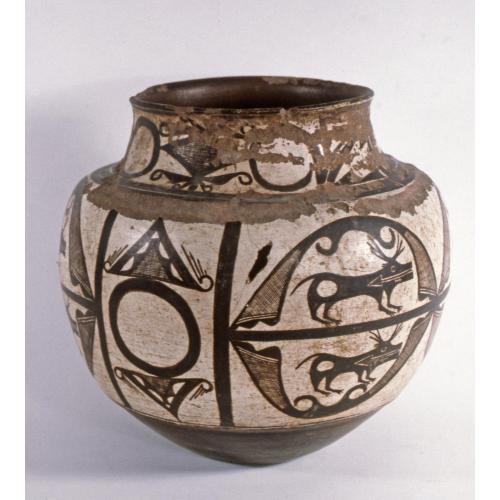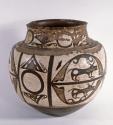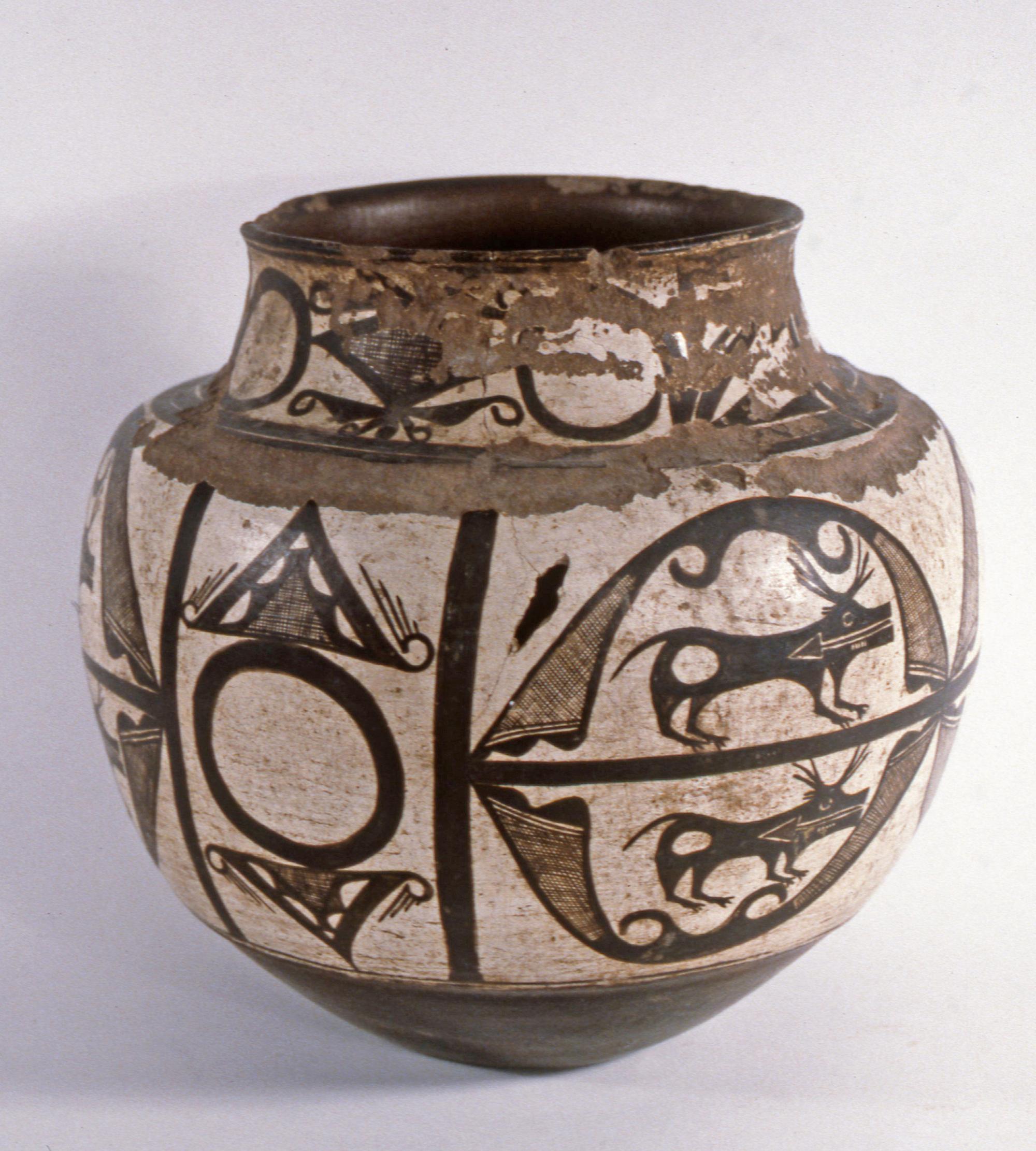
Photograph by Addison Doty. Copyright 2010 School for Advanced Research.
Water jar | K'yabokya de'ele
Date: 1850-1860
Artist or Maker: Unknown
Dimensions:
Dimensions: 31.7 × 34.3 cm (12 1/2 × 13 1/2 in.)
Weight: 3.9 kg (8.6 lb.)
Medium: clay | paints
Place Made:
Zuni Pueblo, McKinley County, New Mexico, Southwest, United States, North America
Object Number: IAF.980
Not on view
Tribal Collection Review RemarksJim Enote and Octavius Seowtewa during collection review visit April 6 and 7, 2009 (Events Record “Collection Review: Zuni Tribe, Review 1”): This jar is not ceremonial. Though it is classified on the catalog card as Pseudo-Ceremonial, it should no longer be classified this way because it was probably not made with the intention of making the item appear ceremonial—it does not resemble actual ceremonial ceramics in either form or motifs. It is a water jar that was antiqued (note the purposeful chipping on the neck and rim, but lack of wear on the base) in an attempt to make it look older than it really was.
The word for a water jar in Zuni is “k'yabokya de'ele,” which translates to “water container vessel” in English. The intended use for these jars was to store and carry water, but they could also be used to store other items.
In Collection(s)
Bibliography:
The Pottery of Zuni Pueblo
- Pg. 139
- Fig. 7.42
The Indian Arts Research Center, in collaboration with Native American community scholars, strives to present accurate collections records. Records may be updated as new information becomes available and is reviewed with the Native American community having cultural affinity to particular items. Please write to iarc@sarsf.org if you have questions or concerns related to the documentation.


